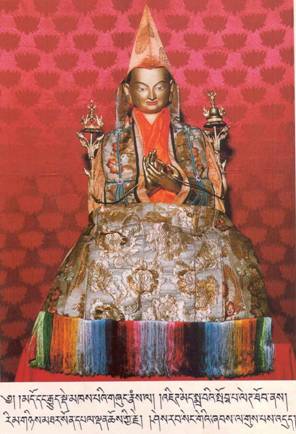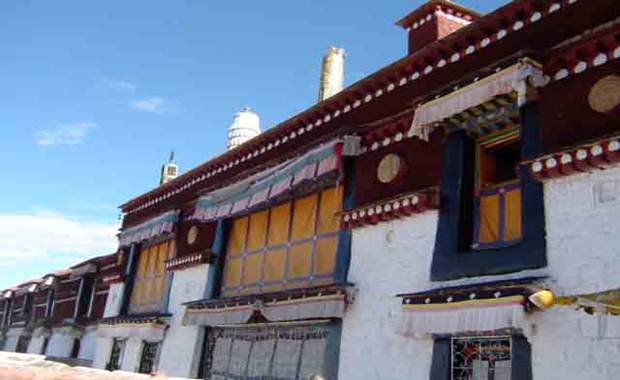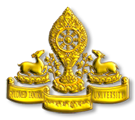History of Gyudmed Monastery

Jetsun Sherab Senge was a direct disciple of the legendary Je Tsongkhapa founder of the Gelugpa Sect of Tibetan Buddhism. Jetsun Sharab Senge, was born in 1382 in a small village in the northern part of the Tsang province of Tibet. He was known to have had perfect moral conduct from childhood. After becoming a monk he studied under the guidance of many eminent teachers (particularly Je Tsonkhapa), Where he studied and mastered all the Sutras and Tantras. His mental and spiritual brilliance became renowned and he later went on to become one of the foremost saints of Tibet. Near the end of Je Tsongkhapa’s life, at a mass gathering at Sera Choden, Tsongkhapa asked his students “who is willing to create a system in which my teachings could thrive?” Overwhelmed by the vastness of such a task, no one would answer until Jetsun Sherab Senge, arose and proclaimed that he would be committed to accomplishing such a task. At that point Je Tsongkhapa appointed Sherab Senge to build the Gyudmed Monastery in Tibet in 1433.
Gyudmed Tantric Monastic in Tibet
 The Gyudmed Monastery was founded in Tibet in 1433 by Lama Je Sherab Senge, the most renowned and celebrated disciple of Lama Je Tsongkhapa. Gyudmed Monastery in Tibet was the first tantric monastery of the Gelugpas and was created in the style of Nalanda, Sera, Drepung, and Gaden monasteries with one difference, these famous monasteries were established for the teaching of sutra, while Gyudmed was established as a centre for the study of Tantra.
The Gyudmed Monastery was founded in Tibet in 1433 by Lama Je Sherab Senge, the most renowned and celebrated disciple of Lama Je Tsongkhapa. Gyudmed Monastery in Tibet was the first tantric monastery of the Gelugpas and was created in the style of Nalanda, Sera, Drepung, and Gaden monasteries with one difference, these famous monasteries were established for the teaching of sutra, while Gyudmed was established as a centre for the study of Tantra.

